Help
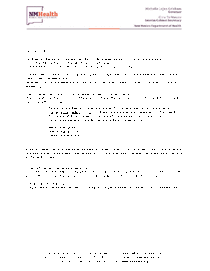 NEW Specimen Collection Card Exchange Process and Ordering
Children's Medical Services - Help
February 11, 2025
NEW Specimen Collection Card Exchange Process and Ordering
Children's Medical Services - Help
February 11, 2025
The New Mexico Newborn Bloodspot Program will begin distribution of the NEW specimen collection card on Monday March 3rd.
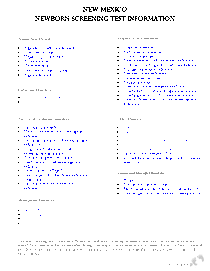 Newborn Screening Test Information
Children's Medical Services - Help
June 6, 2022
Newborn Screening Test Information
Children's Medical Services - Help
June 6, 2022
This document offers a comprehensive listing all of the conditions and disorders which the newborn screening program currently tests for.
 Newborn Screening Specimen Collection Procedure
Children's Medical Services - Help
September 10, 2021
Newborn Screening Specimen Collection Procedure
Children's Medical Services - Help
September 10, 2021
This procedure explains how to properly collect a specimen for the newborn screening program.
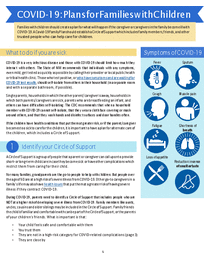 Covid-19 Planning for Families with Children
Children's Medical Services - Help
September 10, 2020
Covid-19 Planning for Families with Children
Children's Medical Services - Help
September 10, 2020
Families with children should create a plan for what will happen if the caregiver or caregivers in the family become ill with COVID-19. A Covid-19 Family Plan should establish a Circle of Support which includes family members, friends, and other trusted people who can help care for children.
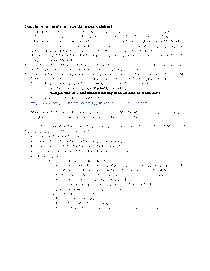 Diagnostic Audological Assessment
Children's Medical Services - Help
February 5, 2013
Diagnostic Audological Assessment
Children's Medical Services - Help
February 5, 2013
Audiologist section of the newborn hearing screening program manual.
 Glossary of Newborn Hearing Screening Terms
Children's Medical Services - Help
December 18, 2012
Glossary of Newborn Hearing Screening Terms
Children's Medical Services - Help
December 18, 2012
This glossary of terms makes understanding the terminology used when talking about newborn hearing screening much easier. It explains such terms as auditory brainstem response, audiogram, audiologist, early intervention, and dozens more.
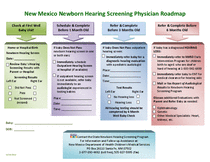 Physician's Roadmap
Children's Medical Services - Help
December 18, 2012
Physician's Roadmap
Children's Medical Services - Help
December 18, 2012
This form makes it easy for physician’s to track a baby’s hearing screening follow-up tasks from birth to 6 months old.
 Reasons to Follow Up
Children's Medical Services - Help
December 18, 2012
Reasons to Follow Up
Children's Medical Services - Help
December 18, 2012
Explains the many reasons why you should continue with follow-up visits if your baby does not pass newborn hearing screening.
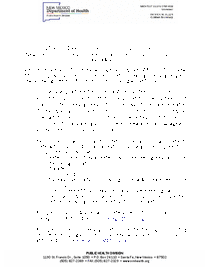 Birthing Hospital Screening Responsibilities
Children's Medical Services - Help
December 14, 2012
Birthing Hospital Screening Responsibilities
Children's Medical Services - Help
December 14, 2012
Explains requirements for initial hearing screening, rescreening of infants who refer, infants not screened prior to discharge, infants who pass screen but have an identified risk factor, hospital documentation and communication of screening results, hospital screening requirements, and more.
 Medical Home Responsibilities
Children's Medical Services - Help
December 14, 2012
Medical Home Responsibilities
Children's Medical Services - Help
December 14, 2012
Since 1999, the Joint Committee on Infant Hearing has advocated for appropriate and necessary care for the infant with hearing loss to be directed and coordinated by the child’s physician within the medical home with support from appropriate ancillary services.
 Principles and Guidelines for Early Development of Deaf and Hard of Hearing Children
Children's Medical Services - Help
December 14, 2012
Principles and Guidelines for Early Development of Deaf and Hard of Hearing Children
Children's Medical Services - Help
December 14, 2012
Since the first universal newborn hearing screening programs were established in the early 1990s, there has been significant progress. Progress is evident in the development and implementation of protocols for newborn hearing screening, pediatric audiologic evaluation of newborns, fitting of amplification, and medical management of children who are deaf or hard of hearing.
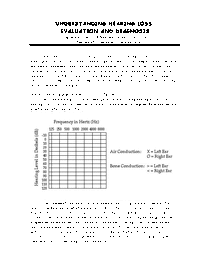 Understanding Newborn Hearing Screening Diagnosis
Children's Medical Services - Help
December 14, 2012
Understanding Newborn Hearing Screening Diagnosis
Children's Medical Services - Help
December 14, 2012
When a hearing loss is first diagnosed, the test results may seem confusing. Although hearing loss is often described as a percentage, it is too complex to describe with one number. Remember, also, that determining how your child uses, or will use, his or her residual hearing is a process.
 Why Physicians Check Newborn Hearing Screen Status & Provide Needed Follow Up
Children's Medical Services - Help
December 14, 2012
Why Physicians Check Newborn Hearing Screen Status & Provide Needed Follow Up
Children's Medical Services - Help
December 14, 2012
This document explains why physicians check newborn hearing screen status and provide needed follow-up.
 NHS Newborn Hearing Screening Script for Talking to Parents
Children's Medical Services - Help
September 5, 2012
NHS Newborn Hearing Screening Script for Talking to Parents
Children's Medical Services - Help
September 5, 2012
This script helps healthcare providers to talk to parents in English and Spanish about a variety of situations including informing parents of the screen, explaining passing and not passing, inconclusive results or could not screen, passing and not passing with risk factors for hearing loss, and does not pass.
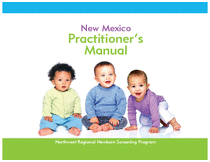 Newborn Screening Practitioner's Manual
Children's Medical Services - Help
September 29, 2011
Newborn Screening Practitioner's Manual
Children's Medical Services - Help
September 29, 2011
This manual provides a wealth of information for the newborn screening practitioner including screening essentials, conditions included in the screening panel, summary of conditions, criteria for requesting follow-up specimens, screening practices, recommendations for specimen collection, unsatisfactory specimens, reporting results, problems in screening practice, educational services, fees and screening kit information, exemptions, and more.
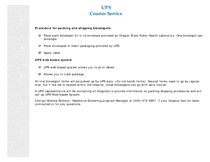 Newborn Screening Packing & Shipping Procedure
Children's Medical Services - Help
April 1, 2010
Newborn Screening Packing & Shipping Procedure
Children's Medical Services - Help
April 1, 2010
This procedure explains how to pack and ship blood spots to the newborn screening program.


